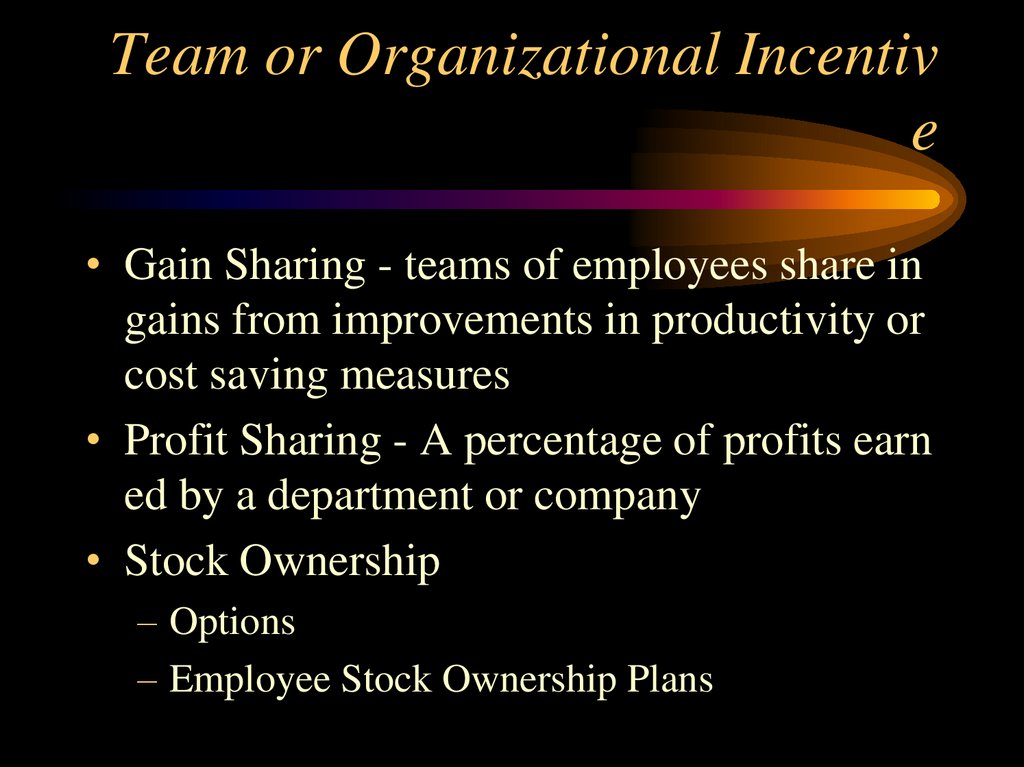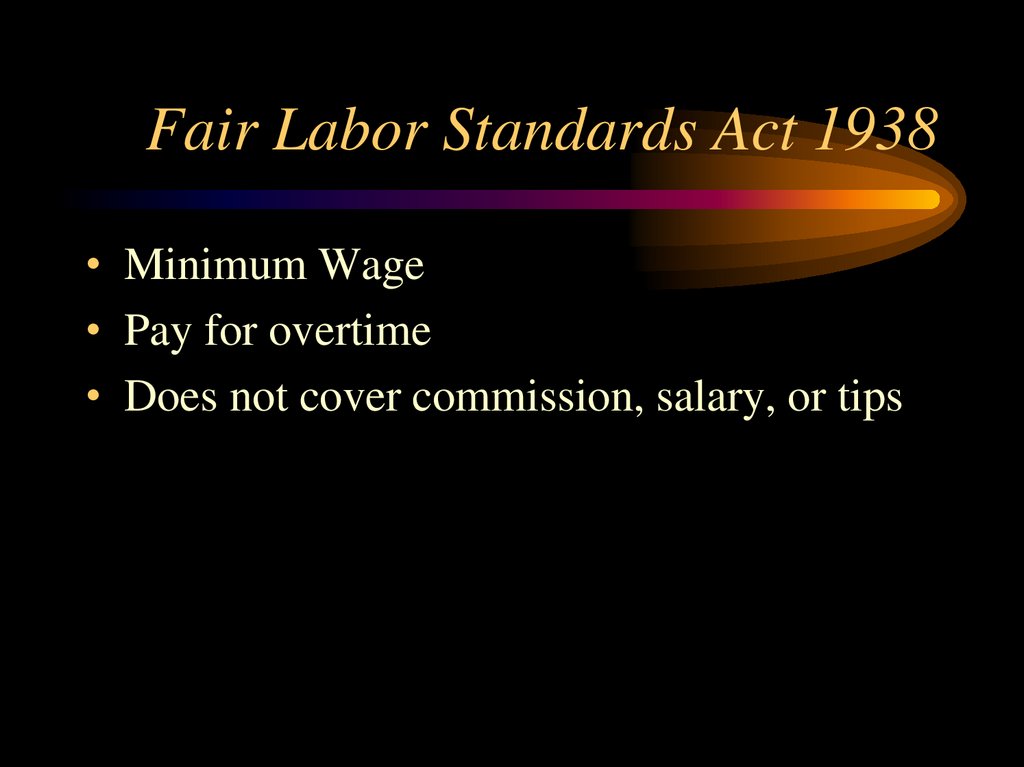Similar presentations:
Human resource management
1.
Human Resource Management• The process of planning, organizing, directi
ng (motivating), and controlling the procure
ment, development, compensation, integrati
on, maintenance, and separation of organiza
tional human resources to the end that organ
izational, individual, and societal needs are
satisfied.
2.
Human Resource ManagementHuman Resource Management includes all acti
vities used to attract & retain employees and to
ensure they perform at a high level in meeting o
rganizational goals.
These activities are made up of
1. Recruitment & selection.
2. Training and development.
3. Performance appraisal and feedback.
4. Pay and benefits.
5. Labor relations.
3.
Human Resource Planning• HR Planning includes all activities managers do
to forecast current and future HR needs.
– Must be done prior to recruitment and selection
– Demand forecasts made by managers estimate the n
umber & qualifications the firm will need.
– Supply forecasts estimate the availability and qualifi
cations of current workers and those in the labor mar
ket.
4.
HRM Components– Component should be consistent with the others,
organization structure, and strategy.
• Recruitment: develop a pool of qualified applicants.
– Selection: determine relative qualifications & potential for a
job.
• Training & Development: ongoing process to develop
worker’s abilities and skills.
• Performance appraisal & feedback: provides informa
tion about how to train, motivate, and reward workers.
– Managers can evaluate and then give feedback to enhance w
orker performance.
5.
HRM ComponentsPay and Benefits: high performing employees should be
rewarded with raises, bonuses.
– Increased pay provides additional incentive.
– Benefits, such as health insurance, reward membership in firm.
Labor relations: managers need an effective relationship
with labor unions that represent workers.
– Unions help establish pay, and working conditions.
If management moves to a decentralized structur
e, HRM should be adjusted as well.
6.
Recruitment– External recruiting: managers look outside the firm
for people who have not worked at the firm before.
• Managers advertise in newspapers, hold open houses, recr
uit at universities, and on the Internet.
– External recruitment is difficult since many new jobs have specifi
c skill needs.
– A multi-prong approach to external recruiting works best.
– Internal Recruiting: positions filled within the firm.
• Internal recruiting has several benefits:
– Workers know the firm’s culture, may not have new ideas.
– Managers likely already know the candidates.
– Internal advancement can motivate employees.
7.
HRM Planning: Outsourcing– Outsourcing: managers can decide to contract with
outside workers rather than hiring them.
– Outsourcing is more flexible for the firm.
– Outsourcing often provides human capital at a lower cost.
• Outsource problems: managers lose control over output.
– Outsource contractors are not committed to the firm.
• Unions typically are against outsourcing that has potential
to eliminate member’s jobs.
8.
Selection ToolsFigure 10.3
Background
Information
Interviews
References
Selection
Performance tests
Paper tests
Physical
Ability tests
9.
Selection ProcessAfter a pool of applicants are identified, qualifications
related to the job requirements are determined:
• Background Information: includes education, prior empl
oyment, college major, etc.
• Interview: almost all firms use one of two types:
– Structured interview: managers ask each person the same job-relat
ed questions.
– Unstructured interview: held like a normal conversation.
– Usually structured interviews preferred; bias is possible.
• Physical Ability Test: measure strength & endurance.
– Good for physically demanding jobs.
10.
Selection ProcessPaper & Pencil Tests: Either an ability and personality t
est.
– Ability test: assess if applicant has right skills for the job.
– Personality test: seek traits relevant to job performance.
– Be sure test is a good predictor of job performance.
Performance Tests: measure job performance.
– Typing speed test is one example.
– Assessment Center: candidates assessed on job-related activities
over a period of a few days.
References: outside people provide candid information
about candidate.
– Can be hard to get accurate information.
11.
Reliability & Validity– Selection tools must be reliable and valid.
• Reliability: the degree to which the tool measures the sam
e thing each time it is used.
– Scores should be close for the same person taking the same test o
ver time.
• Validity: Does the test measure what it is supposed to mea
sure?
– Example: does a physical ability test really predict the job perfor
mance of a firefighter?
• Managers have an ethical and legal duty to develop good
selection tools.
12.
Terms• Labor Union-an organization with legal aut
hority to negotiate with the employer on beh
alf of employees
• Bonafide Occupational Qualification (BOQ)
-individual characteristics necessary for perf
ormance of job requirements
• Employees Vs Independent Contractors
• Union Shop - must be in the union
13.
Training & Development• Training: teach organizational members how to perf
orm current jobs.
– Help worker’s acquire skills to perform effectively.
• Development: build worker’s skills to enable them t
o take on new duties.
– Training used more often at lower levels of fir
m, development is common with managers.
– A Needs Assessment should be taken first to de
termine who needs which program and what to
pics should be stressed.
14.
Types of Development– Varied Work Experiences: Top managers must buil
d expertise in many areas.
– Workers identified as possible top managers given many differen
t tasks.
– Formal Education: tuition reimbursement is comm
on for managers taking classes for MBA or similar.
– Long-distance learning can also be used to reduce travel.
Whatever training and development efforts used,
results must be transferred to the workplace.
15.
Terms (cont)• Right-to-work laws - can’t force membershi
p
• Contrast Error-interviewer bases judgement
of a candidate upon a comparison with prec
eding interviewee
• Similarity Error-bias toward a candidate tha
t is similar to the interviewee
• Situational Interviews-give scenarios to can
didates and judge their responses
16.
Job Analysis• Job Analysis-the act of examining positions
within an organization
• Job Description-narrative explaining the sco
pe of a position
• Job Characteristics-tasks involved in a posit
ion
• Job Requirements-personal characteristics n
ecessary to fill a position
17.
Performance Appraisal• Process of evaluating employee performanc
e
–
–
–
–
–
job related strengths
development needs
progress toward goals
determine ways to improve performance
Pay an promotion decisions
• More systematic is better, for the most part
18.
Performance Appraisal (cont)Self Appraisal
Peer Appraisal
360 Degree appraisal
Central Tendency Error-everyone ranked as
average
• Leniency-individuals are ranked higher than
they deserve
19.
Who Appraises Performance?Figure 10.6
Supervisors
Peers
Customers &
Clients
Sources of
performance
appraisals
Self
Subordinates
20.
Pay and Benefits– Pay level: how the firm’s pay incentives compare to
other firms in the industry.
– Managers can decide to offer low or high relative wages.
• Pay Structure: clusters jobs into categories based on i
mportance, skills, and other issues.
– Benefits: Some are required (social security, worker
s comp).
– Others (health insurance, day care, and others) are provided
at the employers option.
– Cafeteria-style plan: employee can choose the best mix of ben
efits for them. Can be hard to manage.
21.
Pay• Base Wage
– Job Based Pay-paid for the job that is done
– Competency Based Pay-pay is linked to job-rel
evant skills, knowledge, and experience
• Incentive Pay-linked to job performance
– can increase motivation
– links employees to firm performance
– works well when employees trust firm
22.
Individual Incentives• Piece-Rate - Pay for each unit of output
• Commissions - Pay from percentage of sale
s or profits
• Bonuses - Lump sum payments
• Merit Pay - Permanent increases in base pay
linked to individual’s previous performance
• Seniority - Increases over time
23.
Team or Organizational Incentive
• Gain Sharing - teams of employees share in
gains from improvements in productivity or
cost saving measures
• Profit Sharing - A percentage of profits earn
ed by a department or company
• Stock Ownership
– Options
– Employee Stock Ownership Plans
24.
Labor Legislation Timeline• Pro-Union Legislation (1920’s and 1930’s)
• Union Restriction Legislation (1940’s and 1
950’s)
• Equal Employment Legislation (1960’s to p
resent)
25.
Pro-Union/Labor Legislation• Railway Labor Act 1926
– The fundamental right of workers to engage in l
abor organizing activity without fear of employ
er retaliation and discrimination
• Avoid service interruptions
• Eliminate Restrictions on joining unions
• Prompt settlement of disputes
• Federal Insurance Contribution Act 1935
– social security contribution by employers
26.
Wagner & National Labor Relations Act 1935
• Restore the equality of bargaining power ari
sing out of employer’s general denial of lab
or of the right to bargain collectively with th
em---Granted right to Strike
– Five Unfair Practices Outlawed
Interference with organizing
Domination
Discrimination in hiring
Discrimination against those filing charges
Refusal to bargain collectively
27.
Fair Labor Standards Act 1938• Minimum Wage
• Pay for overtime
• Does not cover commission, salary, or tips
28.
Union Restriction• Taft-Hartley Act Labor Management Relati
ons Act 1947
– Criticized the Wagner Act for its bias towards u
nions, limited the constitutional right of free spe
ech by employers, did not consider unfair labor
practices on the part of unions
• Employees Allowed to refrain from unions
• Closed shop was outlawed and a written agreement
was required for withdrawal of union dues from pay
checks
29.
Taft-Hartley (cont)• Recognition of supervisor unions not requir
ed
• One certification election per year
• Allowed employee initiated decertification
elections
30.
Landrum-Griffin Act 1959• Detailed regulation of internal union activit
y
– Control of due increases
– Right to nominate and vote
– Filing of reports with the Secretary of Labor
31.
Pro-Individual• Equal Pay Act 1963
– Men and women must be paid equally when doi
ng equal work
• requiring similar skill, effort, responsibility, and con
ditions
• Equal Pay Vs Comparable Worth
32.
Title VII of the Civil Rights Act of1964
• Prohibits discrimination in all phases of em
ployment based on race, color, religion, sex,
or national origin.
– Such information can’t be considered in hiring,
firing, promotions, training, or granting raises
– religious discrimination
– EEOC monitors, justice department enforces
33.
Individual Rights (cont)• Age Discrimination Act of 1967
– Protects those over 40
• Occupational and Safety Health Act 1970
– Requires employers to provide a safe and health
ful workplace with adequate protection against
hazards
• Dangerous Equipment
• Chemicals
– Established OSHA
34.
Individual Rights (cont)• Equal Employment Opportunity Act 1972
– EEOC can sue employers in federal court on be
half of aggrieved individual or class of people
• Americans with Disabilities Act 1990
– Employers with more than 15 employees can n
ot discriminate against disabled employees
• Civil Rights Act 1991
– Awards aggrieved employees punitive damages


































 management
management








